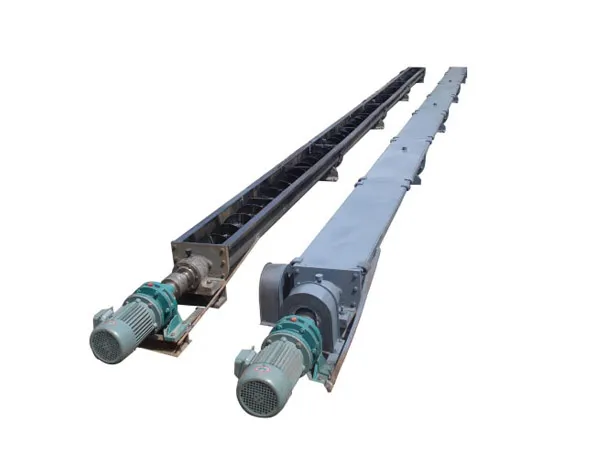Elegir lo correcto tornillo transportador Es fundamental para garantizar un manejo de materiales eficiente y confiable en diversas industrias.. Ya sea que estés moviendo polvos finos, materiales granulares, o residuos semisólidos, seleccionar un transportador que se adapte a su aplicación específica puede mejorar la productividad, reducir los costos de mantenimiento, y prolongar la vida útil del equipo. Con numerosas configuraciones, materiales, y diseños disponibles, puede ser abrumador encontrar el ajuste perfecto. Esta guía lo guiará a través de los factores esenciales a considerar al elegir un transportador de tornillo., incluyendo el tipo de material, capacidad, ángulo de inclinación, y entorno operativo, ayudándole a tomar una decisión bien informada y adaptada a sus necesidades.
Transportador de tornillo elegir

1. Definir el material que se transporta (Paso más crítico):
Nombre del material: Sea específico (p.ej., “Cemento Pórtland,” “harina de soja,” “arena mojada”).
Densidad aparente: Peso por unidad de volumen (p.ej., lbs/ft³ o kg/m ³). Esencial para cálculos de capacidad y requisitos de energía..
Tamaño de partícula & Distribución: ¿Es polvo fino?, granular, bandear, aterronado, fibroso? Dar mínimo, máximo, y tallas medias si es posible.
Fluidez: ¿Con qué facilidad fluye?? (p.ej., fluyendo libremente, lento, pegajoso, fluidizable). Busque su ángulo de reposo si es posible.
abrasividad: ¿Desgasta el equipo?? (p.ej., arena, La alúmina es muy abrasiva.). Esto dicta la elección de materiales para el tornillo y el canal..
Corrosividad: ¿Ataca químicamente a los materiales?? (p.ej., ácidos, sales). Afecta las elecciones materiales (grados de acero inoxidable, recubrimientos especiales).
Temperatura: Temperatura de funcionamiento del material.. Afecta la selección de materiales., tipos de rodamientos/sellos, y potencial expansión/contracción.
Contenido de humedad: Puede afectar significativamente la fluidez, pegajosidad, y corrosividad.
Friabilidad: ¿El material se rompe o degrada fácilmente?? Puede requerir velocidades más lentas o diseños de vuelo específicos..
Características especiales:
Higroscópico: Absorbe la humedad del aire..
Explosivo/inflamable: Requiere medidas de seguridad específicas (motores a prueba de explosiones, toma de tierra, sellado adecuado).
Tóxico/Peligroso: Requiere contención (completamente cerrado, sellos específicos).
Grado alimenticio/sanitario: Requiere materiales específicos (acero inoxidable), acabados (pulido), y características de diseño (fácil de limpiar, sin grietas).
Pegajoso/se acumula: Puede requerir un diseño sin eje, recubrimientos especiales, o tipos de vuelo específicos.
2. Determinar la capacidad requerida (Rendimiento):
Tasa: ¿Cuánto material se debe mover por unidad de tiempo?? Especificar las unidades claramente (p.ej., toneladas por hora (Tph), kg/min , pies cúbicos por hora (CFH), m³/hr).
Base: ¿La tarifa se basa en el peso o el volumen?? ser consistente. Si se basa en el peso, necesita la densidad aparente para convertirla en volumen para dimensionar.

3. Definir la configuración del transportador:
Distancia de transporte: la horizontal (o inclinado) Longitud desde el centro de la entrada hasta el centro de la salida..
Ángulo de inclinación: ¿El transportador es horizontal? (0°) o inclinado? Las pendientes reducen significativamente la capacidad y aumentan los requisitos de energía. Especifique el ángulo con precisión. Transportadores verticales (90°) son una categoría especial.
…
Para obtener información más detallada sobre cómo elegir un transportador de tornillo adecuado, por favor haga clic aquí: https://www.zymining.com/en/a/news/screw-conveyor-choose.html


